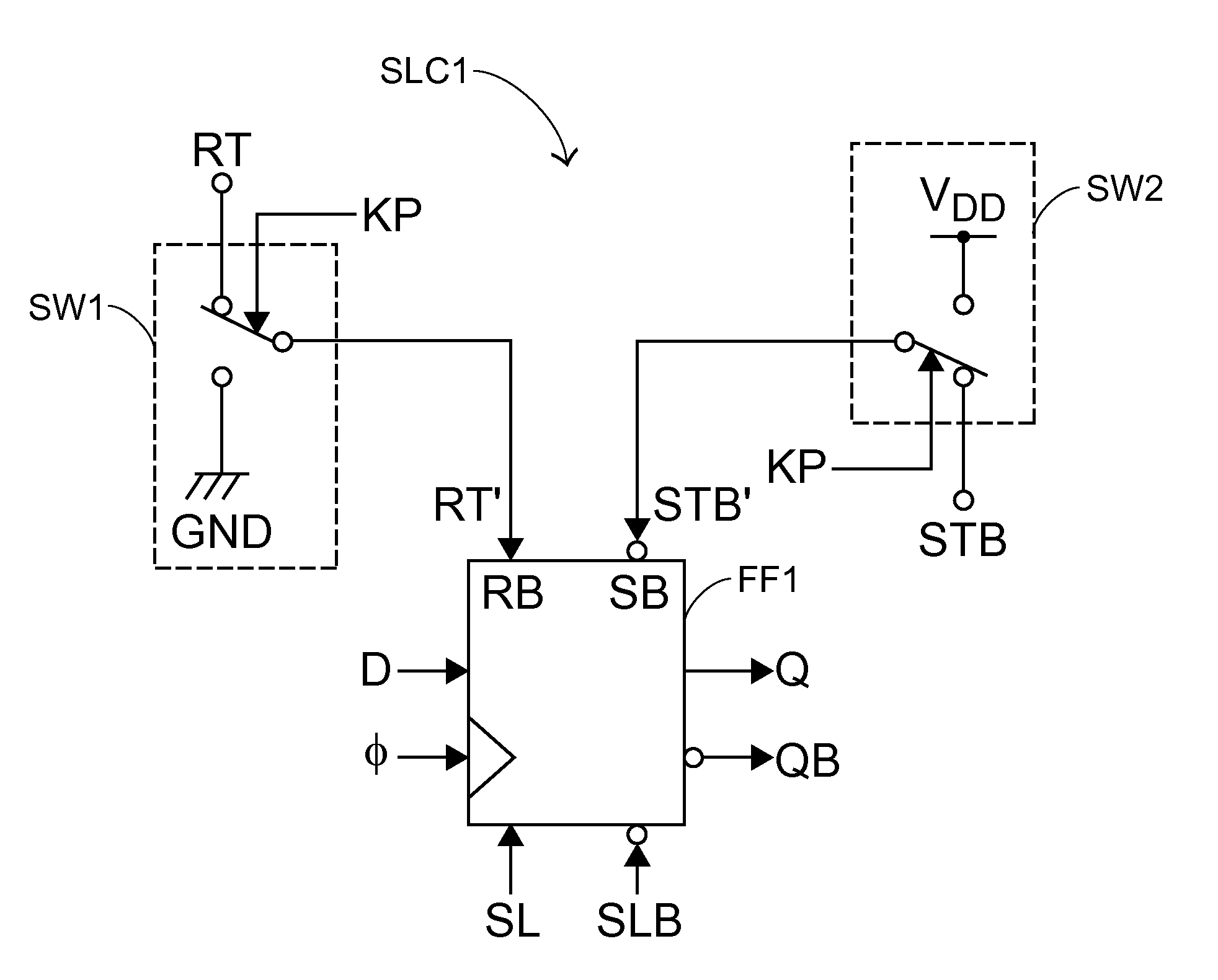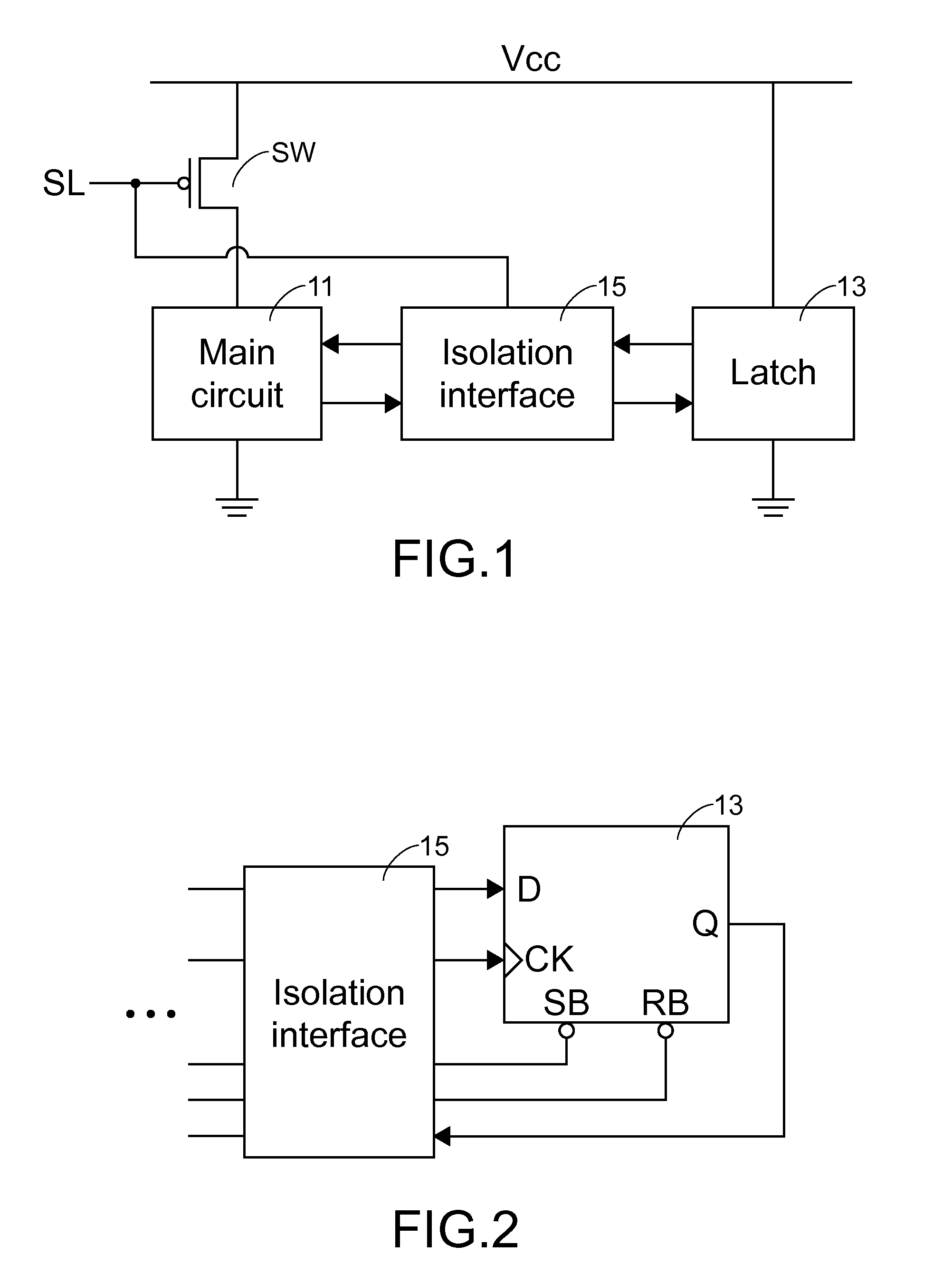Data-retention latch for sleep mode application
- Summary
- Abstract
- Description
- Claims
- Application Information
AI Technical Summary
Benefits of technology
Problems solved by technology
Method used
Image
Examples
Embodiment Construction
[0022]FIG. 4A is a schematic diagram showing the latch of the first embodiment of present invention. FIG. 4B is a timing diagram showing signals operated in the sleep mode according to the first embodiment. In the first embodiment, the latch is operated in the sleep mode when the sleep signal input terminal SL is in the logic high level (i.e., SL=1), and the latch is operated in the active mode when the sleep signal input terminal SL is in the logic low level (i.e., SL=0). Moreover, the data input terminal D serves to temporarily store the data in the latch according to a clock signal applying to the clock input terminal CK; and the data output terminal Q and the inverted data output terminal QB serve to output the data temporarily stored in the latch, wherein the data derived from the data output terminal Q is inverted to the data derived from the inverted data output terminal QB. Moreover, the data output terminal Q will stay at the prior state when the reset terminal RB is in the...
PUM
 Login to View More
Login to View More Abstract
Description
Claims
Application Information
 Login to View More
Login to View More - R&D
- Intellectual Property
- Life Sciences
- Materials
- Tech Scout
- Unparalleled Data Quality
- Higher Quality Content
- 60% Fewer Hallucinations
Browse by: Latest US Patents, China's latest patents, Technical Efficacy Thesaurus, Application Domain, Technology Topic, Popular Technical Reports.
© 2025 PatSnap. All rights reserved.Legal|Privacy policy|Modern Slavery Act Transparency Statement|Sitemap|About US| Contact US: help@patsnap.com



